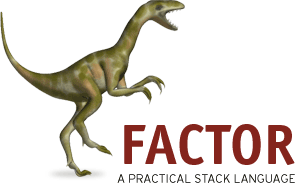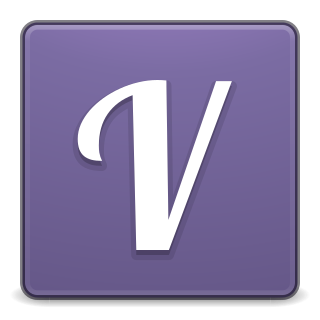Graphics
Graphic capabilities come in several different flavors that are intended for different audiences. The 2htdp/image library provides convenient functions for constructing images. This library is mainly used by students in How to Design Programs (HtDP) based courses. In the following example, a sierpinski function is defined and called (at the same time) to generate a Sierpinski triangle of depth 8.
#lang racket;; A picture(require2htdp/image)(letsierpinski([n8])(if(zero?n)(triangle2'solid'red)(let([t(sierpinski(-n1))])(freeze(abovet(besidett))))))DrRacket editors can contain images, and DrRacket displays image values just like any other type of value (such as integers or lists). Running the above program, for example, actually displays a Sierpinski triangle, which can be cut and pasted into another program.
The plot library constructs image values for more mature audiences and needs. For example, the following program plots the sum of two (three-dimensional) Gaussians, as concentric, partially transparent surfaces:
#lang racket;; Visualize a sum of two 3D Gaussians as concentric isosurfaces;; Note: this example requires Racket 5.2 or later(requireplot);; Returns an R x R x R -> R Gaussian function centered at (cx,cy,cz)(define((gaussiancxcycz)xyz)(exp(-(+(sqr(-xcx))(sqr(-ycy))(sqr(-zcz))))));; Lifts + to operate on three-argument functions(define((f3+gh)xyz)(+(gxyz)(hxyz)));; Constructs an image value representing the sum of two Gaussians(plot3d(isosurfaces3d(f3+(gaussian000)(gaussian1.5-1.50))-12.5-2.51-11#:label"g")); labeling adds a legendHere, the isosurfaces3d function requires a three-argument function for its first argument, which the curried f3+ supplies. Besides constructing image values, plot can also write files in Portable Network Graphics (PNG), Portable Document Format (PDF), PostScript and Scalable Vector Graphics (SVG) formats.
GUI programming
Racket implements a portable GUI layer which the libraries mentioned above build on. It is implemented via the native Windows application programming interface (API), via Cocoa on macOS, and via GTK+ on Linux and others. The Racket API is a class-based toolkit, somewhat related to wxWidgets which was used originally.
The following simple guessing game demonstrates coding with the GUI toolkit. The frame% class implements a top-level window, and button% implements a button. The check function defined here produces a function that is used for the button's callback action.
#lang racket/gui;; A GUI guessing game(definesecret(random5))(definef(newframe%[label"Guessing game"])); toplevel window(definet(newmessage%[parentf][label"Can you guess the number I'm thinking about?"]))(definep(newhorizontal-pane%[parentf])); horizontal container(define((make-checki)btnevt)(message-box"."(cond[(<isecret)"Too small"][(>isecret)"Too big"][else"Exactly!"]))(when(=isecret)(sendfshow#f))); success => close window(for([i(in-range10)]); create all buttons(make-objectbutton%(format"~a"i)p(make-checki)))(sendfshow#t); show the window to start the applicationThe GUI can be hand-coded in this way or with the help of a GUI designer program available on PLaneT. [2]
Slideshow
Slide-based presentations can also be developed in Racket using the slideshow language, much like Beamer, but with Racket's programming facilities. Elements of the slides are pictures that can be combined.
For example, the following program displays in full-screen a title slide, followed by a slide with some pictures. The vc-append and hc-append functions combine pictures vertically and horizontally, respectively, and centered on the other axis.
#lang slideshow(slide(text"Slideshow"'roman56)(text"Making presentations in Racket"'roman40))(slide#:title"Some pictures"(applyvc-append(for/list([i5])(define(scale+colorpc)(colorize(scalep(/(add1i)5))c))(hc-append(scale+color(filled-rectangle10050)"darkblue")(scale+color(disk100)"darkgreen")(scale+color(arrow100(/pi6))"darkred")))))Extension packages also exist on PLaneT, [2] for example to include LaTeX elements.








